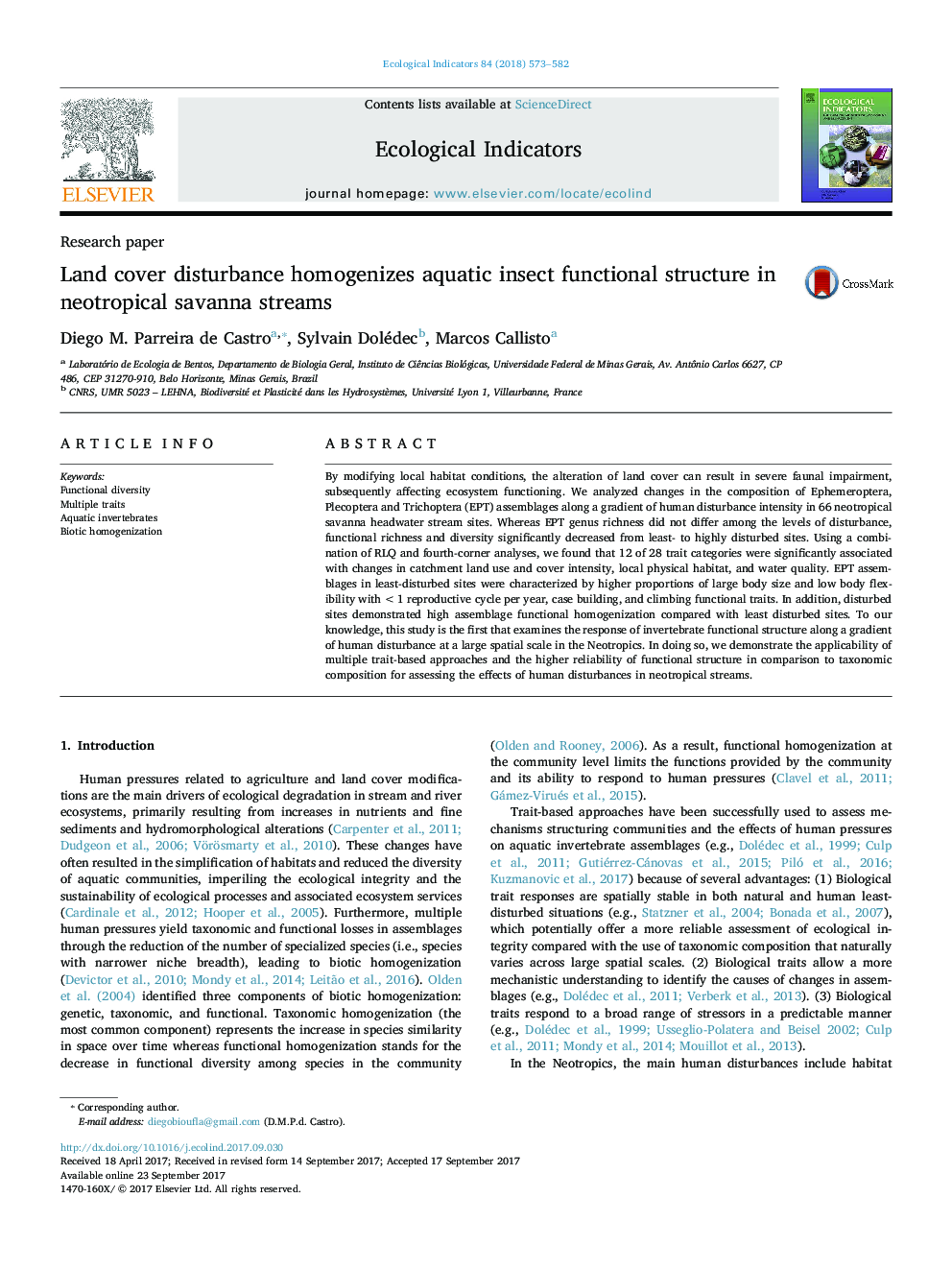| Article ID | Journal | Published Year | Pages | File Type |
|---|---|---|---|---|
| 5741581 | Ecological Indicators | 2018 | 10 Pages |
â¢We assessed the influence of human-induced disturbances on the functional structure of neotropical aquatic invertebrates.â¢Aquatic assemblages were highly specialized in least-diturbed sites and functional homogenized in most-disturbed sites.â¢Functional structure was more reliable than taxonomic composition in the assessment of the effects of human disturbances.â¢Riparian canopy cover was the main driver of the functional structure of least-disturbed sites.
By modifying local habitat conditions, the alteration of land cover can result in severe faunal impairment, subsequently affecting ecosystem functioning. We analyzed changes in the composition of Ephemeroptera, Plecoptera and Trichoptera (EPT) assemblages along a gradient of human disturbance intensity in 66 neotropical savanna headwater stream sites. Whereas EPT genus richness did not differ among the levels of disturbance, functional richness and diversity significantly decreased from least- to highly disturbed sites. Using a combination of RLQ and fourth-corner analyses, we found that 12 of 28 trait categories were significantly associated with changes in catchment land use and cover intensity, local physical habitat, and water quality. EPT assemblages in least-disturbed sites were characterized by higher proportions of large body size and low body flexibility with <1 reproductive cycle per year, case building, and climbing functional traits. In addition, disturbed sites demonstrated high assemblage functional homogenization compared with least disturbed sites. To our knowledge, this study is the first that examines the response of invertebrate functional structure along a gradient of human disturbance at a large spatial scale in the Neotropics. In doing so, we demonstrate the applicability of multiple trait-based approaches and the higher reliability of functional structure in comparison to taxonomic composition for assessing the effects of human disturbances in neotropical streams.
Graphical abstractDownload high-res image (196KB)Download full-size image
